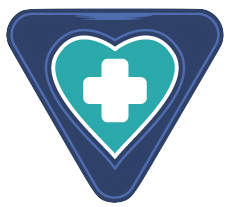Polycystic Ovary Syndrome (PCOS) and cervical cancer are two conditions that often spark concern among those affected, due to overlapping symptoms yet fundamentally distinct etiologies. This article aims to clarify the relationship between PCOS and cervical cancer while shedding light on the broader health implications associated with PCOS, and when it is prudent to seek
Womens Health
Abortion remains a contentious issue globally, but medication abortion, commonly referred to as the abortion pill, presents a non-invasive option for those seeking to terminate a pregnancy. With its rising prominence, it is essential to understand how it works, what to expect, and the potential ramifications of using this method. The abortion pill regimen typically
Endometriosis is a chronic and often debilitating condition characterized by the growth of tissue similar to the endometrium— the inner lining of the uterus— in places outside the uterus. This ectopic endometrial tissue can lead to a host of symptoms including severe pelvic pain, painful menstrual periods, and, in some cases, fertility challenges. Despite being
Uterine fibroids are non-cancerous tumors that develop in or on the uterus. While often benign, their presence can lead to a variety of symptoms that may significantly impact an individual’s quality of life. Fibroids come in different sizes and can be located in various parts of the uterus, potentially affecting nearby organs. This is particularly
The relationship between abortion and ectopic pregnancy is often shrouded in misunderstanding and misinformation. Indeed, it is crucial to clarify that there is currently no conclusive evidence establishing a direct causal link between induced abortion and the development of ectopic pregnancies. Although some earlier studies hinted at a potential correlation, the present body of research—including
Endometriosis, an often perplexing and painful condition, affects countless individuals globally. Characterized by the presence of tissue resembling the uterine lining growing outside the uterus, endometriosis can lead to debilitating symptoms, including severe pelvic pain and other chronic issues. Its genesis is believed to be intertwined with various factors, including genetic predispositions, hormonal imbalances, and
Ovarian cysts, fluid-filled sacs forming on the ovaries, are common occurrences in women of childbearing age. While many cysts remain asymptomatic and resolve on their own, some individuals may experience complications that lead to discomfort, including back pain. This article delves into how ovarian cysts can impact the body, particularly the lower back, and explores
Cervical cancer is a significant health concern worldwide, with a multitude of factors influencing its risk. Although complete prevention may not be realistically achievable, several actionable strategies can substantially mitigate the likelihood of developing this condition. This article delves into the primary causes of cervical cancer and emphasizes the importance of vaccination, regular screenings, lifestyle
Navigating the complexities of reproductive health often raises concerns, especially when it comes to breastfeeding after an abortion. Health professionals assure that it is safe for individuals to continue breastfeeding following both medical and surgical abortions. This guidance extends to various abortion procedures, which are generally categorized into two types: medical abortions and surgical abortions.
Cesarean deliveries, while often necessary for the health and safety of both the mother and the infant, present unique challenges during recovery, one of which is constipation. A cesarean section leads to surgical trauma that impacts various bodily functions, including digestive processes. Hormonal fluctuations, dietary changes, reduced mobility, and the physical pain associated with the
